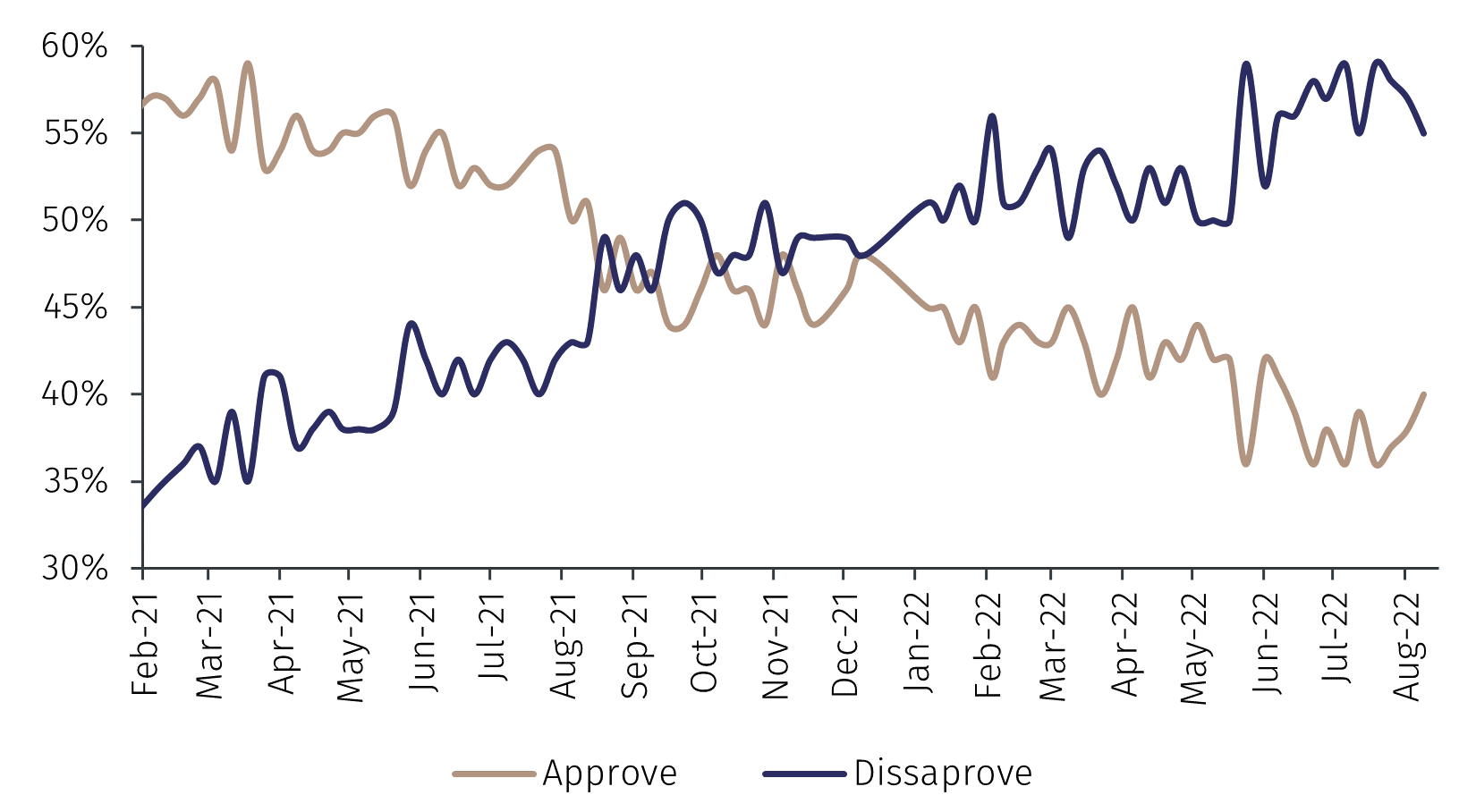How California Became The World's Fourth Largest Economy

Table of Contents
The Rise of the Technology Sector
Silicon Valley, a name synonymous with innovation and technological advancement, has played a pivotal role in shaping the California economy. This concentration of tech giants, startups, and venture capital has created a self-perpetuating cycle of growth, driving the state's digital economy forward. The impact of this tech industry on California's GDP is undeniable.
-
The emergence of Silicon Valley as a global tech hub: The convergence of brilliant minds, abundant venture capital, and a culture of risk-taking transformed a once-rural area into the global epicenter of technological innovation. This fostered a positive feedback loop where success breeds more success, attracting further investment and talent.
-
The role of Stanford University and other research institutions in fostering innovation: Leading research universities like Stanford, UC Berkeley, and Caltech have been instrumental in providing the intellectual foundation for Silicon Valley's growth. These institutions nurture groundbreaking research, produce highly skilled graduates, and facilitate the transfer of technology from academia to the private sector.
-
The impact of venture capital funding on startup growth: The abundance of venture capital in Silicon Valley has fueled the growth of countless startups, many of which have evolved into major tech companies. This readily available funding allows entrepreneurs to take risks, innovate, and scale their businesses rapidly.
-
The contributions of major tech companies like Apple, Google, and Facebook to California's GDP: These tech giants not only contribute directly to the state's GDP through their operations and employment but also create a ripple effect, supporting a vast network of related businesses and industries.
A Diverse and Robust Economic Base
While the technology sector is undeniably crucial, California's economic strength stems from its remarkably diverse base. Beyond Silicon Valley, agriculture, entertainment, tourism, and other sectors contribute significantly to the state's overall economic prosperity and influence its California GDP.
-
California's agricultural output and its role in the food industry: California is a leading agricultural producer, known for its wine, fruits, vegetables, and nuts. This sector provides jobs, generates revenue, and contributes significantly to the nation's and even the world's food supply.
-
The global influence of Hollywood and the entertainment industry: Hollywood's influence extends far beyond entertainment; it's a major economic driver, creating jobs, generating revenue, and exporting California culture globally. This sector contributes significantly to California's GDP.
-
The economic impact of tourism in California: California's stunning natural beauty, vibrant cities, and world-class attractions draw millions of tourists annually, injecting billions of dollars into the state's economy and boosting its California GDP.
-
The growing aerospace and defense industries in the state: Companies like Boeing and Lockheed Martin have a significant presence in California, contributing to high-skilled employment and economic growth, impacting California GDP and related economic sectors.
-
The development of biotechnology and renewable energy sectors: California is at the forefront of innovation in biotechnology and renewable energy, creating new opportunities for economic growth and job creation, further enhancing the state's California GDP.
A Skilled and Educated Workforce
California's economic success is inextricably linked to its highly skilled and educated workforce. The state's numerous prestigious universities and a consistent influx of skilled immigrants have fostered a robust human capital base, driving innovation and productivity.
-
The contribution of California's top universities (e.g., UC Berkeley, Stanford, Caltech): These institutions are globally renowned for their research and academic excellence, producing a constant stream of highly skilled graduates who contribute significantly to the state's economy and innovation.
-
The role of community colleges in providing skilled labor: California's extensive community college system provides crucial vocational training and education, ensuring a steady supply of skilled workers for various industries.
-
The impact of immigration on California's workforce: Immigrants have historically played a significant role in fueling California's economic growth, bringing diverse skills, entrepreneurial spirit, and contributing to its dynamic workforce.
-
Government initiatives to support education and workforce development: State and local government initiatives focused on education and workforce development play a crucial role in ensuring the continued supply of skilled labor needed to sustain economic growth.
Challenges and Future Outlook for the California Economy
Despite its remarkable success, the California economy faces significant challenges that must be addressed to ensure sustainable and inclusive growth.
-
The impact of the high cost of living on businesses and residents: The high cost of living, particularly housing, presents a major challenge, impacting both businesses and residents. This can affect talent attraction and retention.
-
Addressing income inequality and creating more economic opportunities: Reducing income inequality and ensuring equitable access to economic opportunities are crucial for fostering a more inclusive and prosperous California.
-
Strategies to mitigate the housing crisis: Addressing the severe housing shortage through innovative policies and increased investment is vital for stabilizing the economy and improving the quality of life for residents.
-
The role of sustainable practices and renewable energy in the future of the California economy: Investing in sustainable practices and renewable energy is essential for long-term economic growth and mitigating the impacts of climate change.
Conclusion
California's position as the world's fourth largest economy is the result of a complex interplay of factors. The rise of the technology sector, a diverse economic base, and a highly skilled workforce have all played crucial roles. However, challenges such as the high cost of living and income inequality must be addressed to ensure continued sustainable growth. Understanding the intricate factors that have shaped the California economy provides valuable insights into building strong and sustainable economies. Learn more about the California economy and its future potential by exploring [link to relevant resources]. Further research into the California economy reveals the ongoing dynamism of this world's fourth largest economy.

Featured Posts
-
 Us Port Fees To Cost Auto Carrier 70 Million A Worst Case Scenario
Apr 26, 2025
Us Port Fees To Cost Auto Carrier 70 Million A Worst Case Scenario
Apr 26, 2025 -
 Increased Us Port Fees Auto Carrier Anticipates 70 Million In Losses
Apr 26, 2025
Increased Us Port Fees Auto Carrier Anticipates 70 Million In Losses
Apr 26, 2025 -
 A Critical Military Base Understanding The Us China Power Struggle
Apr 26, 2025
A Critical Military Base Understanding The Us China Power Struggle
Apr 26, 2025 -
 The Impact Of Trumps Presidency A Rural Schools Experience 2700 Miles From Dc
Apr 26, 2025
The Impact Of Trumps Presidency A Rural Schools Experience 2700 Miles From Dc
Apr 26, 2025 -
 Time Interview Trumps Position On A Bill Banning Congressional Stock Trading
Apr 26, 2025
Time Interview Trumps Position On A Bill Banning Congressional Stock Trading
Apr 26, 2025
